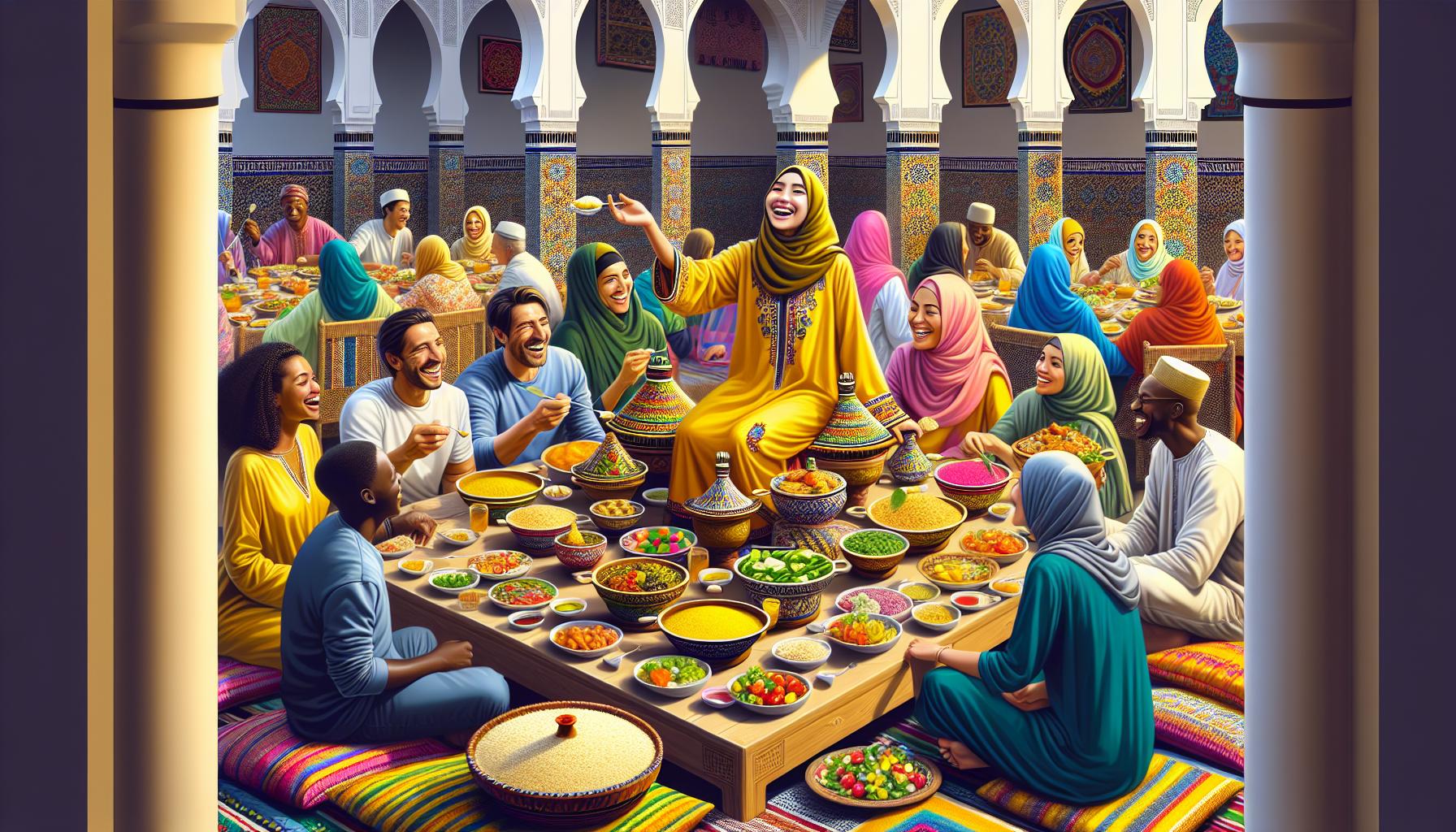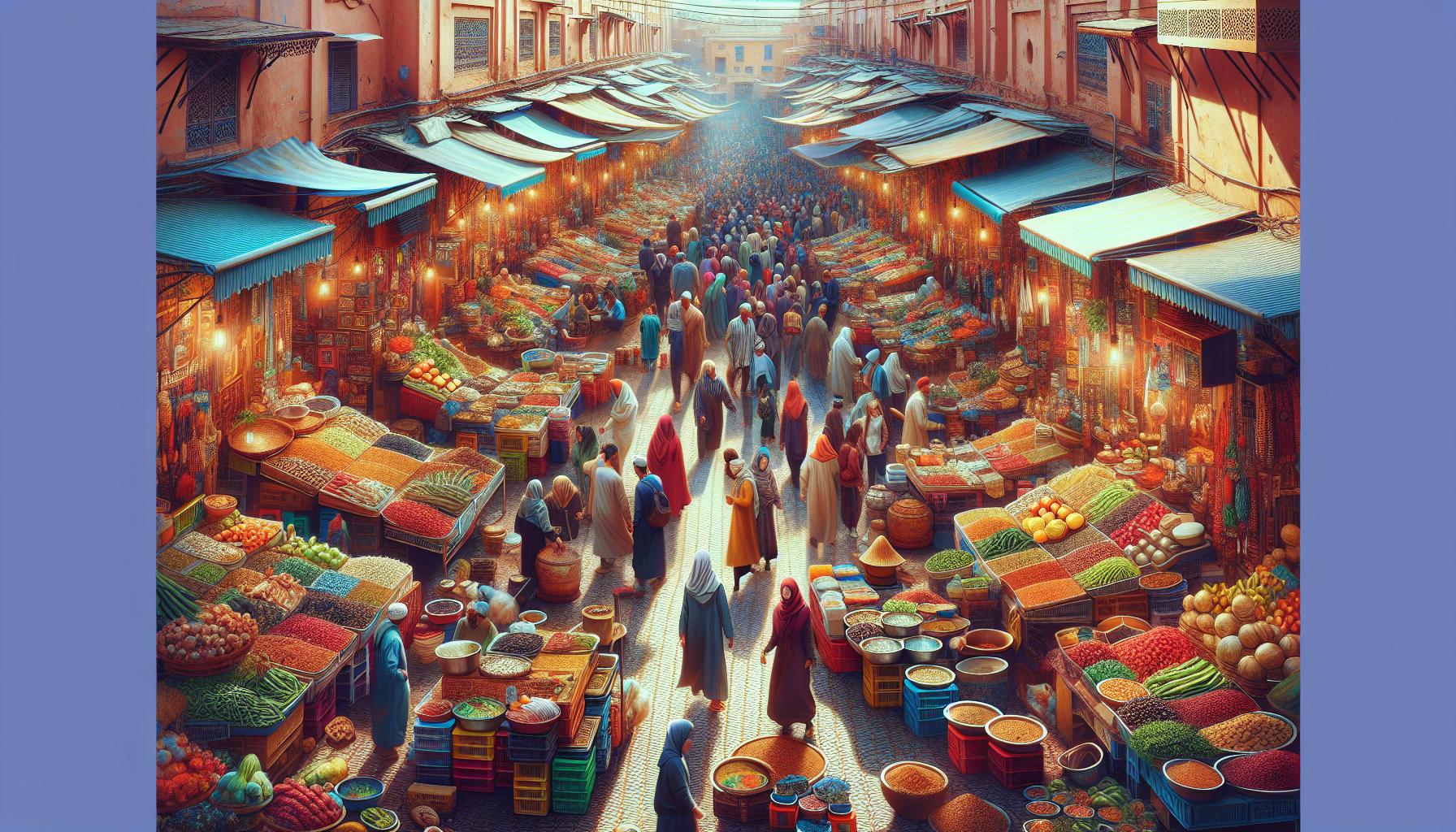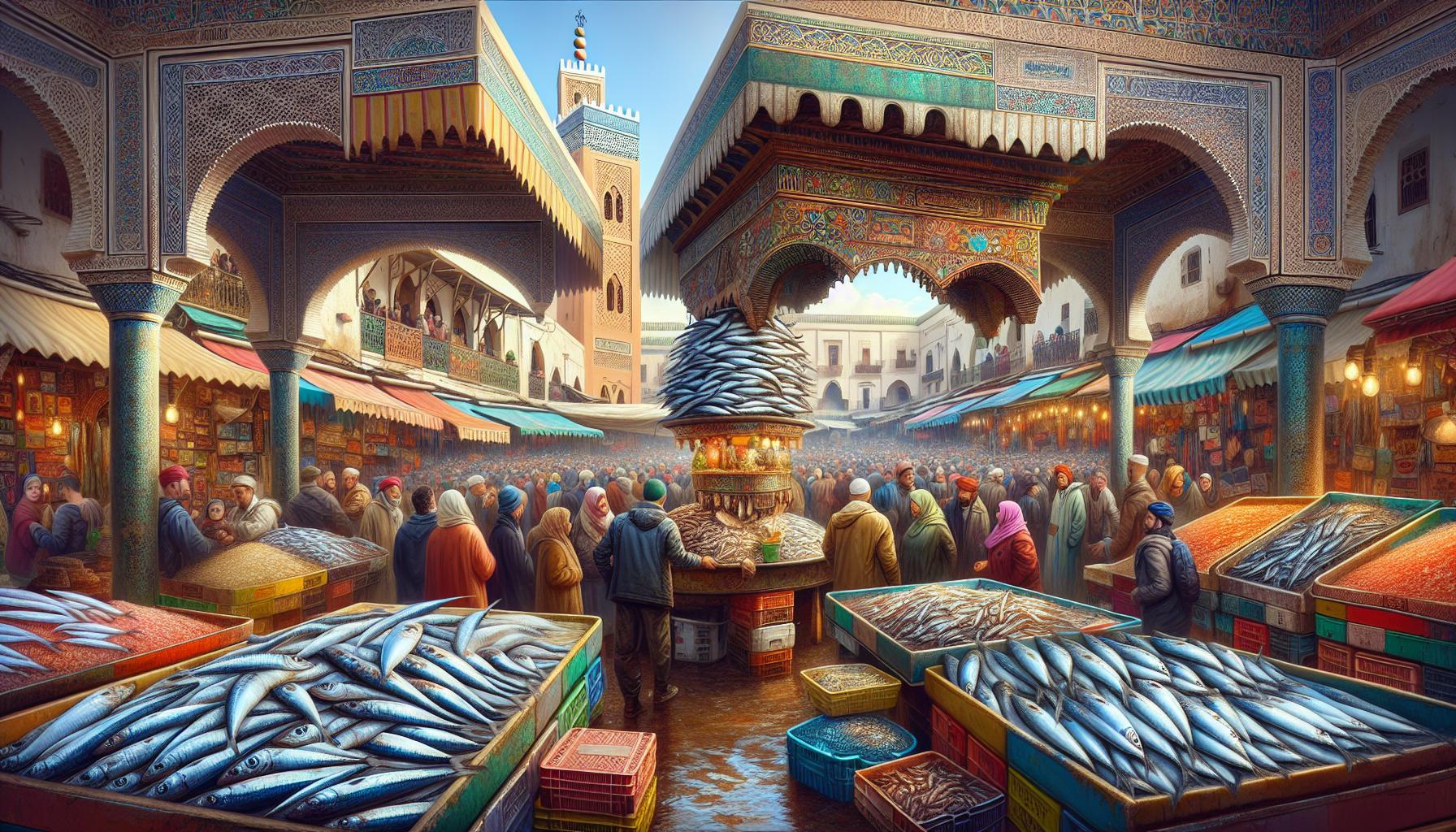Moroccan cuisine tells a vibrant story of flavors, spices, and centuries-old traditions that have captivated food lovers worldwide. From the bustling medinas of Marrakech to the coastal towns of Essaouira, every corner of Morocco offers a unique culinary experience that’s deeply rooted in its rich cultural heritage.
The heart of Moroccan food culture beats in its communal dining traditions, where families gather around a shared plate, breaking bread and strengthening bonds. It’s a place where aromatic tagines simmer for hours, couscous is crafted with practiced precision, and mint tea isn’t just a beverage – it’s a gesture of hospitality that’s woven into the fabric of daily life. The blend of Berber, Arabic, Mediterranean, and European influences creates a magical fusion that’s impossible to resist.
Morocco Food Culture
Traditional Moroccan cuisine reflects centuries of cultural fusion through its distinctive cooking methods and ingredient combinations. The culinary traditions emphasize fresh ingredients, aromatic spices and slow-cooking techniques that create deep, complex flavors.
Essential Moroccan Spices and Ingredients
Moroccan kitchens rely on a core selection of spices that form the foundation of authentic dishes. Cumin, coriander, saffron, turmeric and cinnamon create signature flavor profiles in traditional recipes. Fresh herbs like parsley, cilantro and mint add brightness to dishes such as chermoula sauce and tajines. Key pantry ingredients include preserved lemons, olive oil, argan oil and smen (fermented butter). Local produce features prominently with ingredients like tomatoes, onions, zucchini and eggplant forming the base of many dishes.
The Art of Tagine Cooking
Tagine cooking transforms simple ingredients into tender, flavorful meals through slow braising in distinctive cone-shaped clay pots. The tagine’s unique design circulates steam to create a self-basting effect that concentrates flavors and preserves nutrients. Common tagine combinations include lamb with prunes, chicken with preserved lemons and olives, and fish with chermoula. The cooking process starts with layering aromatics like onions and garlic at the base, followed by meat or vegetables arranged in a cone shape. Spices and liquids combine during the 2-3 hour cooking time to create rich, fragrant sauces.
The Role of Food in Moroccan Social Life

Food serves as the cornerstone of Moroccan social interactions, binding communities through shared culinary experiences. The act of preparing and sharing meals creates lasting bonds between family members friends and neighbors.
Family Gatherings and Hospitality
Moroccan homes welcome guests with elaborate feasts featuring multiple courses served on ornate plates. Extended families gather for Friday couscous a weekly tradition that reinforces familial bonds. Hosts express generosity by offering the best portions to guests placing choice cuts of meat or fish directly on their plates. Special occasions like Ramadan Eid celebrations weddings bring entire communities together around abundant spreads of traditional dishes. The practice of eating from a communal plate symbolizes unity trust among family members.
Traditional Dining Etiquette
Moroccan dining customs follow specific protocols that honor both the food and fellow diners. Guests remove shoes before entering dining areas sitting cross-legged on cushions around low round tables. Everyone eats with their right hand using thumb index middle fingers to scoop food from their section of the communal dish. The host initiates eating by saying “Bismillah” (in the name of God) signaling others to begin. Taking food only from the portion directly in front of oneself demonstrates respect for other diners. Meals conclude when the eldest person finishes eating followed by collective expressions of gratitude “Hamdullah” (praise be to God).
Signature Moroccan Dishes

Moroccan cuisine features distinctive dishes that embody centuries of culinary traditions. Each dish showcases the artful combination of spices, cooking techniques, and fresh ingredients that define Moroccan gastronomy.
Couscous: The National Dish
Couscous stands as Morocco’s most celebrated dish, traditionally served on Fridays after afternoon prayers. Small steamed semolina grains form the base, topped with tender vegetables like carrots, zucchini, turnips, and chickpeas. A flavorful broth infused with saffron, ginger, and turmeric enhances the dish, while braised lamb or chicken adds protein. Expert cooks prepare couscous using a couscoussier, a two-tiered steaming vessel that allows the grains to absorb aromatic vapors from the simmering stew below. The presentation follows specific customs, with the couscous mounded in a cone shape and meat arranged decoratively around the edges.
Popular Street Foods and Snacks
Moroccan street food culture thrives in medinas across the country. Vendors sell b’stilla, a savory-sweet phyllo pastry filled with spiced pigeon or chicken, almonds, and eggs. Fresh-squeezed orange juice stands populate city squares, offering refreshment throughout the day. Harcha, semolina griddle cakes, pair perfectly with honey or cheese for breakfast. Street corners feature vendors grilling spiced meat skewers called brochettes. Sfenj, Moroccan doughnuts, emerge hot from bubbling oil in early mornings. Food carts offer steaming bowls of bessara, a creamy fava bean soup topped with olive oil, cumin, and paprika.
Regional Food Variations

Morocco’s diverse geographical landscapes create distinct culinary territories, each with unique ingredients and cooking methods. Local ingredients and traditional recipes vary significantly from coastal areas to mountain regions and desert communities.
Coastal Seafood Specialties
Atlantic and Mediterranean coastlines shape Morocco’s seafood cuisine. Fresh catches include sardines, mackerel, sole, tuna and sea bass prepared with regional spice blends. Essaouira offers traditional charmoal-grilled sardines seasoned with chermoula, while Tangier specializes in seafood bastilla filled with shrimp and fish. Coastal restaurants serve fish tagines cooked with preserved lemons, olives and saffron. Popular dishes include calamari stuffed with spiced rice and herbs in port cities like Casablanca.
Mountain and Desert Cuisine
Atlas Mountain communities rely on hearty meat dishes and preserved foods. Traditional meals feature slow-cooked lamb with dried fruits, nuts and regional herbs. Desert regions incorporate dates, figs and camel meat into signature dishes. Berber communities prepare tanjia, a Marrakech specialty of spiced meat slow-cooked in clay urns. Mountain villages specialize in mechoui, whole lamb roasted in earthen ovens. Desert oasis towns create distinctive couscous variations using local ingredients like desert truffles and wild mushrooms.
Moroccan Tea Culture and Traditions
Moroccan mint tea forms the cornerstone of social gatherings across the country. Green tea leaves combine with fresh mint sprigs and sugar to create this distinctive beverage, locally known as “atay.” The preparation follows a precise ritual using a traditional teapot called a berrad.
Serving tea involves pouring it from a height into small, decorative glasses, creating a frothy top layer while aerating the tea. The host pours three rounds of tea, following the Moroccan saying: “The first glass is as bitter as life, the second as strong as love, the third as gentle as death.”
Tea ceremonies mark significant moments in Moroccan daily life:
- Morning gatherings start with freshly brewed mint tea
- Business meetings open with tea service
- Family visits center around sharing multiple glasses
- Special occasions feature elaborate tea presentations
The essential elements of authentic Moroccan tea include:
| Component | Description |
|---|---|
| Tea Base | Chinese gunpowder green tea |
| Herbs | Fresh spearmint leaves |
| Sweetener | Large sugar blocks or cubes |
| Equipment | Silver berrad, brass tray, small glasses |
Traditional tea etiquette dictates specific customs:
- Guests receive the first glass of tea
- The host tastes the tea before serving others
- Refusing tea signals disrespect
- Both hands handle the tea glass
- Three glasses minimum demonstrate proper appreciation
Tea preparation demonstrates hospitality in Moroccan homes, establishing connections between hosts and guests. Each region adds local variations to the basic recipe, such as adding wormwood in Tangier or using wild thyme in the Atlas Mountains.
Modern Influences on Moroccan Cuisine
Global culinary trends shape contemporary Moroccan cooking through innovative fusion dishes combining traditional flavors with international techniques. French influences appear in pastries like millefeuille alongside classic Moroccan sweets in local patisseries. Social media platforms showcase modern Moroccan food influencers creating health-conscious versions of traditional recipes using quinoa or gluten-free alternatives.
International tourism drives adaptation in restaurant menus, introducing new presentation styles while maintaining authentic flavors. Fine dining establishments in Casablanca blend Moroccan spices with European cooking methods, creating dishes like saffron risotto with preserved lemon. Food delivery apps connect urban residents with both traditional street food vendors and contemporary fusion restaurants.
| Modern Culinary Trends in Morocco |
|---|
| Rise of food blogging & social media cuisine |
| Fusion restaurants in major cities |
| Health-focused recipe modifications |
| International ingredient integration |
| Digital food delivery services |
Young Moroccan chefs incorporate global ingredients into traditional recipes:
- Adding Japanese matcha to mint tea ceremonies
- Creating tagine dishes with Asian-inspired seasonings
- Experimenting with molecular gastronomy techniques
- Using international grains in couscous alternatives
- Developing vegan versions of meat-based classics
Restaurant culture evolves through:
- Open kitchen concepts displaying food preparation
- Wine pairing events featuring Moroccan dishes
- Contemporary plating techniques
- Food photography workshops
- Pop-up dining experiences
These modern adaptations maintain core Moroccan culinary principles while embracing global gastronomy innovations.
Moroccan food culture stands as a testament to the power of culinary traditions in bringing people together. The intricate blend of spices flavors and cooking methods has created a gastronomic heritage that continues to captivate food lovers worldwide.
From traditional tagines to modern fusion creations Moroccan cuisine demonstrates remarkable adaptability while maintaining its authentic roots. The emphasis on communal dining hospitality and the symbolic significance of dishes like couscous and mint tea showcases how food transcends mere sustenance in Moroccan society.
This rich culinary landscape not only preserves centuries-old traditions but also embraces contemporary influences creating a dynamic and evolving food culture that will undoubtedly continue to inspire future generations of food enthusiasts.

